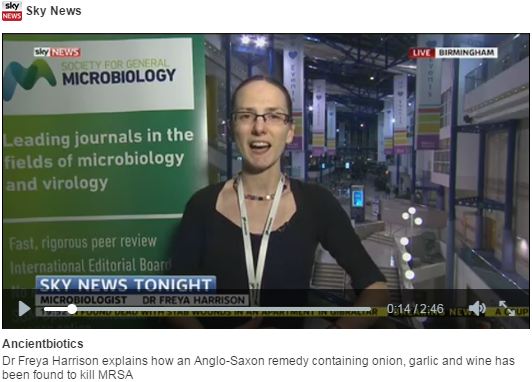
March 23, 2016, by Emma Rayner
The Ancientbiotics project – a new chapter
Exactly a year ago, Dr Freya Harrison from our Centre for Biomolecular Sciences, gave a talk at the Annual Conference of the Microbiology Society in Birmingham and lit the blue touch paper on a news story which went global within a few hours.
Freya’s talk was about the rediscovery she and her colleagues, Dr Steve Diggle and Anglo-Saxonist Dr Christina Lee, made of a 1,000-year-old Anglo-Saxon treatment for eye infections. The 9th century remedy from Bald’s Leechbook in the British Library was found to kill one of the main modern day superbugs, MRSA – in vitro, in collagen biofilms and in ‘in vivo’ mouse models.
A year after the announcement, and with a research paper published, Freya is back at the annual conference today to share a poster on the progress of this compelling piece of research which has so captured the imagination of the public and scientific community.
“Last year we were at the point where we had this little project that we thought might be fun – a little stand-alone thing – now we know it’s got the potential to be a much bigger project,” said Freya.
The team is now starting to examine a range of medieval and early modern texts, including the Leechbook and the later textbook The Lily of Medicine, to identify combinations of ingredients that were being used in a non-random way to treat infections, which could represent new, modern treatments. “We’re now thinking that we didn’t just get lucky and find the needle in the haystack, that there is a rational design to some of these remedies,” said Freya.
She is calling this process ‘Ethnopharmacology 2.0’: “In current ethnopharmacology you take a single traditionally-used compound and test it, whereas we think putting together a combination of ingredients and following a specific preparation instruction could yield a lot more interesting results.”
The latest work on Bald’s eye salve shows that it has a broad spectrum of activity against different bacterial species, without simply being an antiseptic that kills everything, suggesting that there is a specific biochemical mode of action to be uncovered. The team has expanded, and is collaborating with medicinal chemists and pharmacologists here at Nottingham to gain further insight into the mechanisms that underlie the combinations of ingredients found in these ancient texts.
Freya is also working with Dr Sheyda Azimi, a postdoctoral researcher with an immunology background to test the salve on human cells. Early results suggest that it is less cytotoxic to epithelial (skin) cells than the over-the-counter antibiotic treatment chloramphenicol.
The work has had further unexpected results, with the Leechbook set for a new translation – the previous one was done in the mid-1800s – and interest in an annotated version of The Lily of Medicine by Dr Erin Connelly.
The Ancientbiotics team is currently seeking funding for the work so it can mature into an extensive programme of research.
No comments yet, fill out a comment to be the first

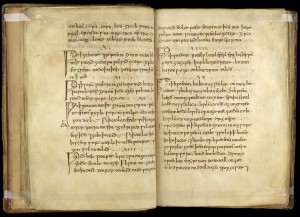
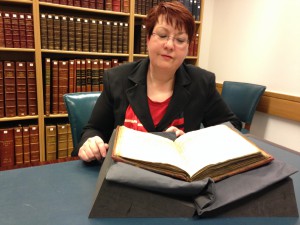
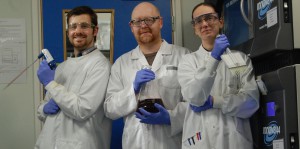
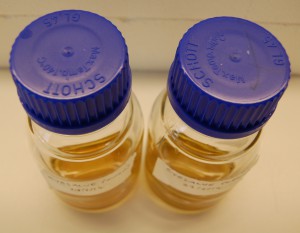
Leave a Reply